|
This has to be one of the most comprehensive explanations of simple low back pain. It explains the different types of low back pain, how we chiropractors and health care professionals classify it, what sort of nasties we're ruling out when we assess you, and most importantly, what YOU can be doing to help yourself! Definitely worth watching...
0 Comments
 I recently read a fascinating article written by Richard Brown, chiropractor and President of the British Chiropractic Association, extolling the virtue of chiropractic treatment as a drug-free, non-surgical intervention for the management of spinal and musculoskeletal conditions. One of the core philosophical tenets of chiropractic is that it is a drug-free intervention. We chiropractors recognise the body's natural ability to heal and repair itself and the fact that, if looked after with appropriate diet and exercise, it will remain healthy and pain free. This key principal is neatly summarised in the New Zealand Commission of Inquiry's 1979 report: "As we have seen, much is made by chiropractors of the drugless and non-surgical nature of their therapy. But modern chiropractors do not suggest that there is only one cause of disease; they admit there are limits to their expertise; and they acknowledge the need for medical intervention and medical monitoring. They do, however, place emphasis on the body's natural functioning and its natural recuperative powers. In these matters of emphasis we see some value in the contribution that the chiropractic outlook can make to healthcare generally. There cannot be any fundamental objection to an attitude to healthcare which restricts drugs to cases where they are shown to be a matter of necessity rather than a matter of mere convenience. Nor can it seriously be suggested that anyone is unreasonable to believe that it is better for the body's disorders to be relieved if possible, by natural rather than artificial or chemical means". Whilst more than 30 years old, this statement still holds validity today in our professional methodologies. Obviously, as spinal care experts, working in the modern, scientific world alongside other healthcare professionals, we chiropractors recognise the benefit and necessity for patients to sometimes take drugs and even undergo surgery. I am certainly not suggesting that anyone should stop taking any prescribed medications without appropriate medical advice, and indeed, at times I will refer my own patients to their GP to obtain appropriate pain relieving medication, understanding the fact that my patients' health and wellbeing is of paramount importance. However, I am mindful of the fact that increasingly it seems that patients are turning away from drugs and surgery and are looking for an effective, research-driven form of natural healthcare. Something that gets to the root of the problem, and not just something that eases the pain or masks the symptoms. Added to which, ongoing scientific research and the media seem to increasingly highlight the complications, side-effects and contraindications for a number of commonly prescribed painkillers and anti-inflammatories, often readily doled out for the management of spinal and musculoskeletal pain. It is not surprising then that people seek out a drug-free, but safe and effective alternative - like chiropractic.  I wasn't surprised by the research findings that the so typically British 'stiff upper lip' may deter patients from seeing their doctor, as they are too embarrassed to disclose their symptoms or fear that they may be 'wasting the doctor's time'. These findings, part of a more lengthy study published in the British Journal of Cancer, may go some way to explain the surprisingly lower than expected cancer survival rates in the UK, when compared with other developed nations, despite access to highly trained medical staff and cutting-edge treatment interventions. A survey of nearly 20,000 people in the developed countries of UK, Canada, Australia, Denmark, Norway and Sweden revealed that one sixth of British men and women over the age of 50 were embarrassed to share their symptoms with their doctor, and a third were reluctant to visit for fear of being 'time wasters'. This could delay diagnosis and hence commencement of treatment - and early intervention is often the most critical factor in a successful outcome for the treatment of many cancers. Fortunately, since we chiropractors primarily deal with problems affecting the musculoskeletal system, rarely do people present with cancers, or symptoms that might lead me to suspect anything more sinister. However, I am all too familiar with people's reluctance to disclose potentially important information that might help me to make the correct diagnosis and hence establish an appropriate treatment plan. All too often they might think that something in their history isn't relevant to their particular, current problem, or they might feel a little embarrassed or awkward about discussing things with me. However, I would urge all patients to provide me with as much information as possible - every consultation is totally confidential and we aim to provide you with a comfortable, relaxed, private environment. There isn't much that shocks me, and chances are, I've probably heard or seen similar before! Whilst we chiropractors mainly treat the joints, muscles, nerves and soft tissues, we spend many years at University studying all the medical sciences, so we are trained to recognise and diagnose all sorts of illnesses and problems, not just those affecting the musculoskeletal system. So, if I were to pick up on something that I thought wasn't within my scope of practice, I would refer you on to your GP, or appropriate healthcare professional for further investigation (obviously with your permission). Personally, I'm just like everybody else; I still squirm with embarrassment and sit there, on my clammy hands, giggling like a nervous schoolgirl, when having to discuss even the most minor of ailments with my GP. I even worry that I'm wearing 'sensible' clothing when seeing my own chiropractor! I faff around, delay making the appointment, fidget in the waiting room - and then feel so much better once it's done! So, be brave and grab the bull by the horns. If you're worried about something it is far better to deal with it sooner rather than later, and if it is something serious, the sooner you get help the better! At least you'll have a definite answer to what the problem is - and this has got to be preferable to the sleepless nights, worrying and wondering and imagining the worst... 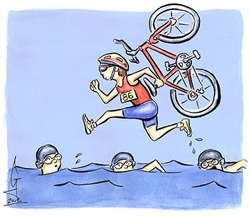 I enjoyed reading this article written by GB triathlete, Helen Russell. She writes about how chiropractic was available at the London Olympics, the first time that chiropractic was included as part of the mainstream core medical services within the Olympic village. It is estimated that nearly 90% of elite athletes use chiropractic treatment on a regular basis! You can read the full article here... I enjoyed the article, particularly the bit when Helen described her own beneficial experience of chiropractic treatment; she was treated by chiropractor, Stuart Herbert, at the Bromsgrove Chiropractic Clinic - I worked with Stuart many years ago when I had just qualified as a chiropractor!  Things are hotting up at the London 2012 Olympics. Only a few more days until the Opening Ceremony... This week, the doors of the Athletes Village will open. Athletes and their support teams from 204 countries will start arriving. And, for the first time, chiropractors will be there! Within the Athletes Village is the state of the art Polyclinic. Open 24 hours a day this multidisciplinary clinic is kitted out with some of the most sophisticated equipment in the country and staffed by highly skilled specialists - including, for the first time ever, chiropractors. It is expected that a high proportion of the anticipated 200 competitors visiting the polyclinic each day will be suffering from musculoskeletal injuries - sprains, strains, muscle injuries and joint pains - exactly the sort of problems that we chiropractors excel in treating. So, it is expected that the team of chiropractors are going to be kept busy, providing care from 7am - 11pm every day, with 24 hour emergency 'on-call' cover as well!  The state of the art Polyclinic in the Olympic Village The team of chiropractors will be working alongside other musculoskeletal healthcare specialists - orthopaedic surgeons, neurologists, sports injury physicians - as well as other core services like dentistry, optometry, and physiotherapy. Together, this team of medical specialists will help to ensure that athletes are in their peak condition for this most important time in their sporting careers.  Richard Brown meets Lord Coe Richard Brown, chiropractor and President of the British Chiropractic Association is one of the chiropractors who has taken time out of his busy practice and professional schedule to be treating the athletes. He had the opportunity to meet Lord Coe, Chairman of LOCOG, who voiced his support at the presence of chiropractors at the Olympics, and who said that his own career would have been far shorter, had it not been chiropractors. Hopefully, Richard and the other chiropractors in the Polyclinic will be able to keep the competitors in tip top condition; here's hoping that they enable Jessica Ennis and a few of her fellow competitors to bring home some shiny medals...!  Taller than average? Wonder if tall people really suffer more with their backs? A recent study, published in the journal Spine* shows that tall people are at far greater risk of being hospitalised due to low back problems affecting the intervertebral discs. *Wahlstrom et al. Risk factors for hospitalisation due to lumbar disc disease. Spine 2012 July 1;37(15):1334-1339 The study compared the incidence of back pain in over 260,000 construction workers over a period of 20 years. They found that taller people (190-199 cm; 6'3"-6'6") were 1.5 times more likely to be hospitalised due to lumbar disc disease than their shorter colleagues (170-179 cm; 5'7"-5'10"). These results are hardly surprising; tools and equipment are typically designed for those of 'average' height and build. Those at either end of the height spectrum find themselves having to use equipment that is not the ideal size for them which can cause extra strain on the spine. Ideally, people should take time to find equipment that is the right size for them. Longer handled tools, raised worktops, properly adjusted seats and desks can help to prevent back pain. We chiropractors recognise that 'prevention is better than cure' and much of chiropractic care is about giving advice to help prevent back pain in the first place, as well as treating it. 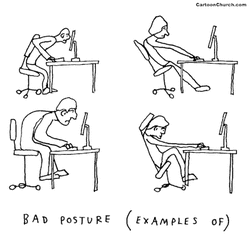 Many of my patients spend a long time each day sat at a desk and I see a direct correlation with the amount of neck and back pain they suffer. Prolonged sitting can be detrimental to the health of the spine, and poor posture can exacerbate this. Not only can poor posture lead to back and neck pain, but it can be related to many 'repetitive strain' type injuries of the wrists, elbows, hands and shoulders. Have a look at the picture below and see how it compares to your sitting position. Get someone to have a look at you when you're sitting and ask them to help you to adjust your seat accordingly. I've listed a few tips on how to sit properly, and hence minimise those aches and pains: Feet - your feet need to be flat on the floor to provide a firm stable base for your spine and pelvis. If your legs are dangling it can place stress on your back and the legs will pull you forwards into an incorrect position. If you need to raise your chair up to be at the right height for the desk, use a foot rest (a shoebox will do!) to support them.
Legs - your knees need to be bent and ideally a little below the level of your hips. Using a wedge cushion will help you to achieve this posture; not only is it more comfortable but it helps to maintain the 'lumbar lordosis' - the healthy curve in the base of the spine. Make sure that the edge of the seat doesn't dig into the back of your knees. Don't sit with your legs crossed - this hinders the circulation and will distort the position of the pelvis and low back. Bottom - Relax into the chair with your bottom right back in the seat, up against the seat back. This will allow the back of the chair to support your spine and improve your posture - ultimately reducing the risk of back pain. Don't perch on the edge of your seat, even for a few minutes, sit back in the chair and move the whole chair closer to the desk. Back - make sure your whole spine is supported; your low back against the backrest of the chair (many have a 'lumbar roll' which will help) and your upper back should be straight, with your shoulder blades gently resting on the back rest. This will help to minimise upper back pain, neck stiffness and achey shoulders. (If you're a 'little' person and find that you can't sit in the seat with your back and bottom touching the back rest, then you might need to place a cushion behind you.) Arms - your chair needs to be high enough so that your elbows are slightly bent and gently sloping down to your wrists (check that your feet still touch the floor if you've raised your seat up - if not, find that shoebox!). Your hands should relax gently onto the keyboard with a minimal bend at the wrist; don't rest your weight on your wrists. Incorrect hand and arm position can cause all sorts of problems! Make sure that your computer keyboard, mouse and screen are directly in front of you so you are not twisting the upper back or shoulders, and have them close enough to you so you don't have to stretch. Head and Neck - make sure that your screen is directly in front of you so you don't have to twist. If you are copying from text then place it in front of you (blutak it to the screen and proof read later!). The monitor needs to be roughly an arms' length away and should be at eye level. This will mean that you don't have to move your head about to see the screen. If the monitor is too high or low then you will have to look either up or down for prolonged periods - this can strain the upper back, neck and shoulder muscles and might cause pain and stiffness. If you find yourself peering at the screen, or leaning forwards to read the text, then maybe get your eyes checked, rather than risking neck pain and headaches. Keyboard and Mouse - make sure that these are close to your body and that you're not reaching out for them. Over-reaching for the mouse can cause prolonged strain on the whole arm and shoulder and seems to be one of the main causes for work-related upper limb pain. Use wireless ones if you can - it minimises the clutter on the desk and makes the mouse easier to move. Desk - in order for your arms and wrists to be in the correct position on the keyboard and mouse, your desk should be about level with your tummy button. You might need to raise the height of your chair to achieve this, but don't leave your legs dangling... find your shoebox/foot rest! Wriggle! - it is important to move about and change position regularly to relieve the pressure and strain on the body. Don't sit for more than 30-40 minutes; get up and walk around for a couple of minutes before sitting back down again (make sure you adopt the correct posture!). I suggest that patients stand up to answer the phone - there are whole offices in Anglesey with people bobbing up and down every five minutes (they're much less stiff and achey!). Remember 'face to face' time - go to see people down the corridor rather than using the internal email - make movement your friend (time away from the tedium of your desk has to be a good thing...!). Phone - use a headset if you are on the phone for any length of time, particularly if you have to be writing or typing at the same time. Holding the phone under your chin will cause your neck to 'crick' and shoulder muscles to tighten up quickly - more neck and upper back pain! Laptop Computers - the 'portability' of laptops makes them tempting to use in awkward positions. However, using them on your lap, particularly for more than a few minutes, can cause all sorts of problems - particularly with the neck and upper back. Make sure that you place your laptop on a desk or table, and adapt your sitting position accordingly to mimic a 'proper desk'. Place your laptop on a stand (a wedge of paper will do) to ensure the screen is at the right height, then adjust your seating position to match. As the keyboard is generally more compact on a laptop, it is worth using a wireless keyboard and mouse in order to prevent unnecessary hand and wrist strain. If you are using your laptop as a more permanent 'desktop' then plugging it in to a proper monitor and keyboard on a proper desk will help you to prevent the risk of back and neck pain. It might seem a pain to have to check your chair and desk - but, believe me, it is definitely more of a pain when your back and neck seize up due to an incorrect position! Spend a bit of time to get it right the once, and make sure you check it (and yourself!) on a daily basis...  A debate has been published today in the British Medical Journal (8 June 2012), questioning the safety of neck manipulation. The story has been picked up by a number of national newspapers, and has been discussed on live radio and television programmes. Regrettably, many of these focus on the negative, so often the case with sensationalist journalism. I hope that I will be able to provide a more realistic, accurate and balanced view. Neck manipulation has been shown to be safe and effective and benefits thousands of people suffering from neck pain and headaches. In fact, the risk of a stroke after treatment is the same whether you see a GP and get a prescription, or see a chiropractor and get your neck adjusted. (http://www.ncbi.nlm.nih.gov/pubmed/18204390) Manipulation of the neck is at least as effective as other medical treatments and is safer than many of the drugs used to treat similar conditions. (http://www.ncbi.nlm.nih.gov/pubmed/17258728) The term chiropractic is often mis-used for treatment carried out by non-chiropractors. This leads to over-reporting of incidents blamed on chiropractors, including in the BMJ. In one report of 24 cases attributed to chiropractors, not one was shown to be a chiropractor. (http://chiromt.com/content/14/1/16#B21) Chiropractors are highly trained in spinal care and manipulation. In one UK study undertaken in 2007, of 50,000 neck treatments reviewed, not one single adverse event was reported. (http://www.ncbi.nlm.nih.gov/pubmed/17906581) The cherry-picking of poor quality research needlessly raises alarm in patients and does little to help people suffering from neck pain and headaches to choose the most appropriate treatment. I hope that this has allayed any fears or worries about the safety and efficacy of spinal manipulation when carried out by a trained, professional pair of hands. However, should you have any further concerns or queries - please, just ask! Having spent much of the bank holiday weekend traipsing around furniture stores, I know that buying a bed can be a costly and time consuming exercise! However, since a poor night's rest can cost you precious sleep and precipitate back pain, it's important to get it right.
So, what's the best mattress? The best mattress is a supportive one - this will differ for each person, depending on their size and shape. What's right for a 10 stone lady might not be right for her 16 stone husband. And, how do I find the right one?
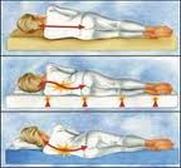 Ideally, your spine should be straight when you are lying, either on your side or your back. If your mattress sags or bows so will your spine, and this may cause aches and pains. Your neck is a continuation of your spine - and you should aim to keep this straight too when sleeping, so choose a supportive pillow that isn't too high or low (more on pillows at a later date...!)
There are several types of mattress, and again, it comes down to personal preference...
 I'm sometimes something of a procrastinator. I dither about making decisions, particularly those bigger ones that might have a lasting effect, either at home, or at the Llangefni Chiropractic Clinic. It's something that I'm sure we all do, but I found a brilliant little snippet that I'm trying to apply to all those unmade decisions: Ask yourself these three questions: 1. What's the best thing that could happen? 2. What's the worst thing that could happen? 3. What's the most likely thing to happen? If you can live with the worst thing that could happen, and the most likely thing to happen will help you to achieve the things that you want, then, decision made! Go for it. However, if the worst thing that could happen is totally unacceptable and the most likely thing to happen isn't going to help much, then again, decision made. Don't do it! So, for instance, with respect to the recent refurbishment of the Llangefni Chiropractic Clinic. What's the best thing that could happen? The clinic will be refurbished, quickly and on schedule, with minimal disruption, and will look amazing, be more inviting for patients and a nicer place to work in. What's the worst thing that could happen? The work will take ages and ages and maybe cause the clinic to be uninhabitable, in which case I'd have to find alternative premises. What's the most likely thing to happen? The work will over-run a little, be noisy, dusty and disruptive but we'll cope with it, and in the long run the clinic will benefit from the facelift. Whilst I wasn't actually the one that had to make the decision about the building work, I did ask myself these questions regularly over the past five months when I felt I couldn't put up with any more noise and dust! I'm pleased to report that the building work is now nearly finished, and the Llangefni Chiropractic Clinic is looking an awful lot better... |
Ceri AnnEich Ceiropractydd yng Nghlinig Ceiropracteg Llangefnii Blogumulus by Roy Tanck and Amanda Fazani
Archives
June 2020
|
Llangefni Chiropractic Clinic, 6 GlanHwfa Rd, Llangefni LL777EN, Anglesey, North Wales, UK privacy policy Llangefni Chiropractic Clinic 2020
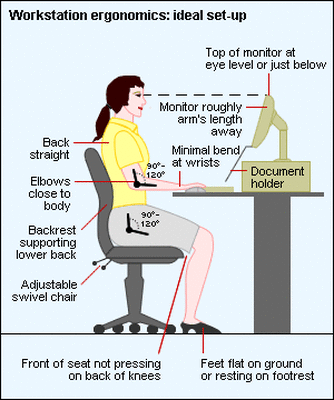
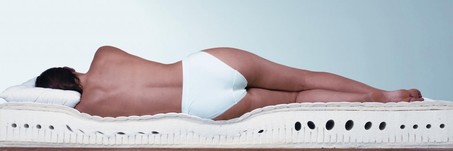
 RSS Feed
RSS Feed



